The Ushers, Paragons of the Psychopomps
Even among their own ranks, psychopomps don’t dole out reverence willy-nilly. Take the psychopomp ushers, for example, the paragons of the race—think Abyssal Lords only hold the Abyssal. These high-up wardens of death are basically demipowers, running parts of the Boneyard or sitting as high judges. They’ve got a lot of clout, deciding the fates of countless souls. But here’s the thing: Most of them started out as regular psychopomps, working their way up over eons. So, while they get respect from their peers, it’s a cool, measured sort of respect. There’s always that reminder of their humble beginnings, keeping any potential egos in check.
This is a survey of the known ushers of the psychopomps. Many of them also maintain their own realms in the Underlands.
See also
Atropos
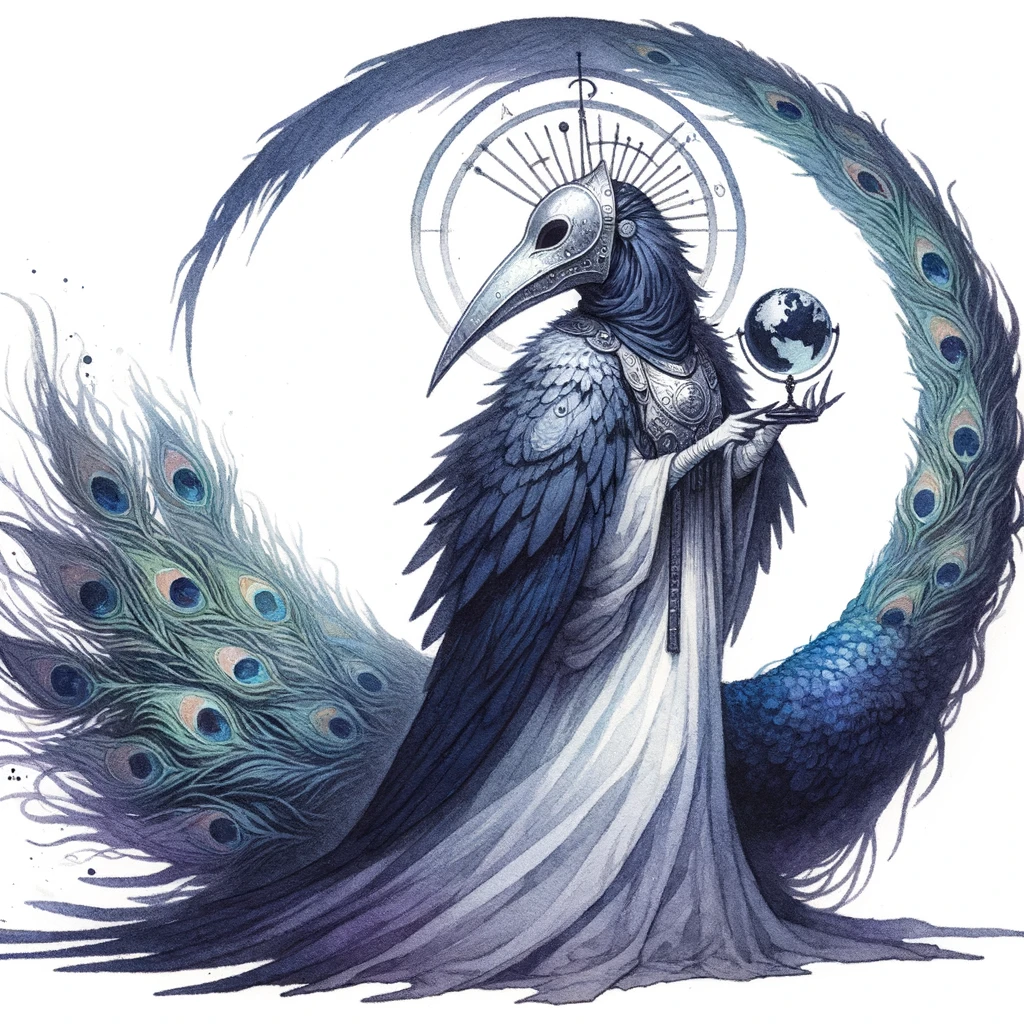
The Last Sister (planar psychopomp usher of fate, sleep, youth [she/her] / N)
Portfolio: Fate, sleep, youth
Realm: Outlands / Underlands / Pharasma’s Palace
Alignment: N
Atropos, known as the Last Sister and the Judge of Judges, is on of the most influential bloods in the courts of the Underlands. She serves as the ultimate arbitrator of the fate of mortal, her authority second only to Pharasma, the goddess of fate, death, and rebirth. As the youngest daughter of Pharasma, Atropos’s role is shrouded in mystery, with little known about her predecessors, if any exist at all. The chant amongst psychopomps is that Pharasma is grooming Atropos to succeed her, a role that will become crucial when the universe eventually undergoes its death and rebirth.
In her current capacity, Atropos presides over the domain of sleep, a role that aligns with her being in a state of preparation for greater responsibilities in the future. She handles the most sensitive and challenging cases among petitioners, particularly the souls of fallen children, reflecting her compassionate and profound nature in dealing with delicate matters of the afterlife.
Atropos’s physical manifestation is both majestic and symbolic. She appears as an enormous nosoi wearing a silver plague mask, and has a peacock tail of infinite length. Each eye on this tail represents a soul she is destined to judge. However, she is also known to take the form of a young human girl, especially when present in Pharasma’s court, presumably because the that tail causes quite the stir! Her jurisdiction extends beyond Pharasma’s Palace, also encompassing the courts of the Boneyard and its planar gates.
Source: Concordance of Rivals [PF1e] p6.
Barzahk
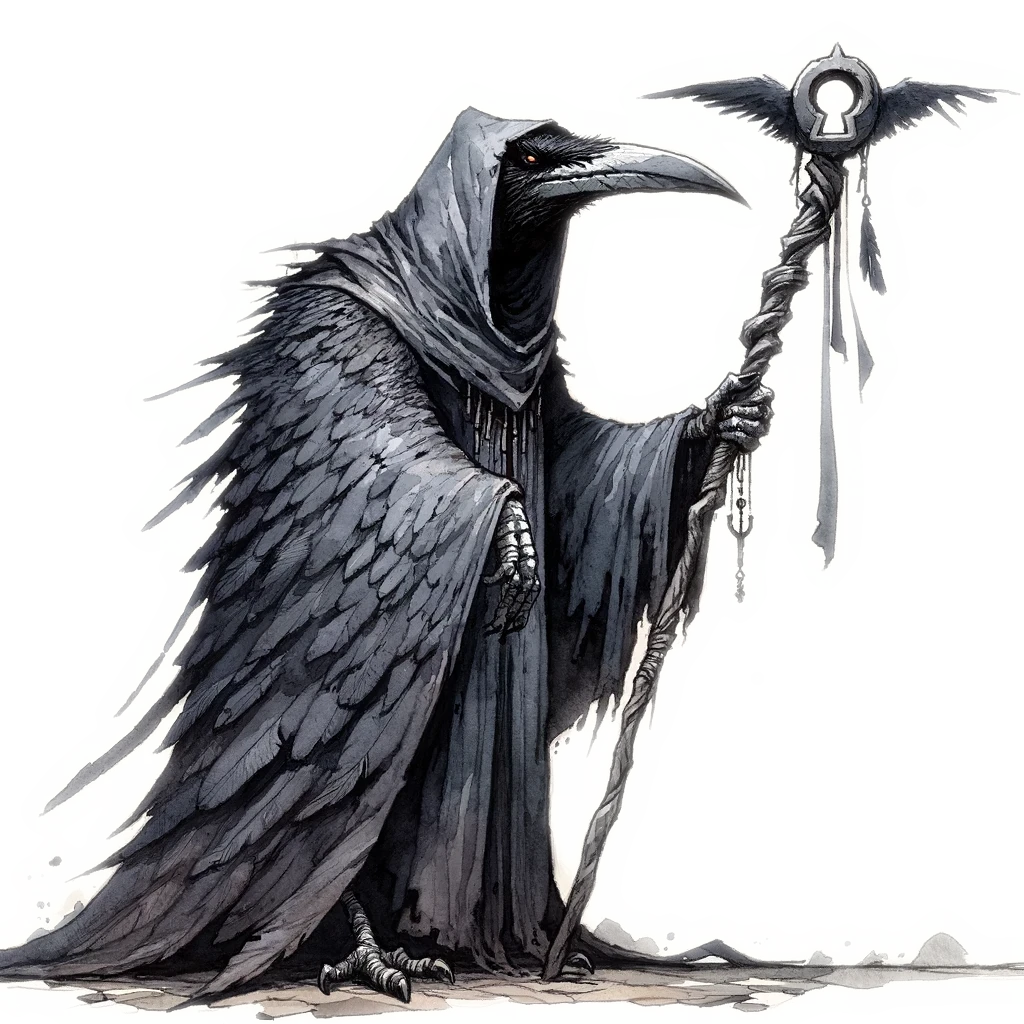
The Passage (planar psychopomp usher of compasses, travellers, vigils [they/them] / N)
Portfolio: Compasses, travellers and vigils
Realm: Astral / Dead Roads
Alignment: N
The chant goes that Barzahk, known as the Passage, was born not from the fears and needs of mortals, but from those of psychopomps themselves. His origin coincided with the appearance of the Dead Roads, those secretive pathways of the psychopomps that connecting the planes to the mortal worlds. Barzahk’s manifestation is that of an enormous migratory bird, often a corvid such as a crow or raven, but sometimes a robin or other songbird.
Cloaked in robes and bearing a staff and a keyhole, Barzahk embodies the concept of passage and transition. They oversee the comings and goings of psychopomps on the Dead Roads, and by extension, they have a special concern for the souls of travellers and those who die far from home. Their role is crucial as such experiences can be disorienting for souls, potentially causing them to linger longer than necessary.
Barzahk seems to have a sense of wanderlust, often roaming aimlessly and showing a lack of attention to their appointed duties. This trait grants the psychopomps under their purview a significant degree of autonomy, more so than is typical even within the already independent structure of the Boneyard. As a result, many of Barzahk’s powerful servants start to perceive themselves as akin to ushers—a notion quickly corrected by true ushers.
Source: Concordance of Rivals [PF1e] p6
Ceyannan
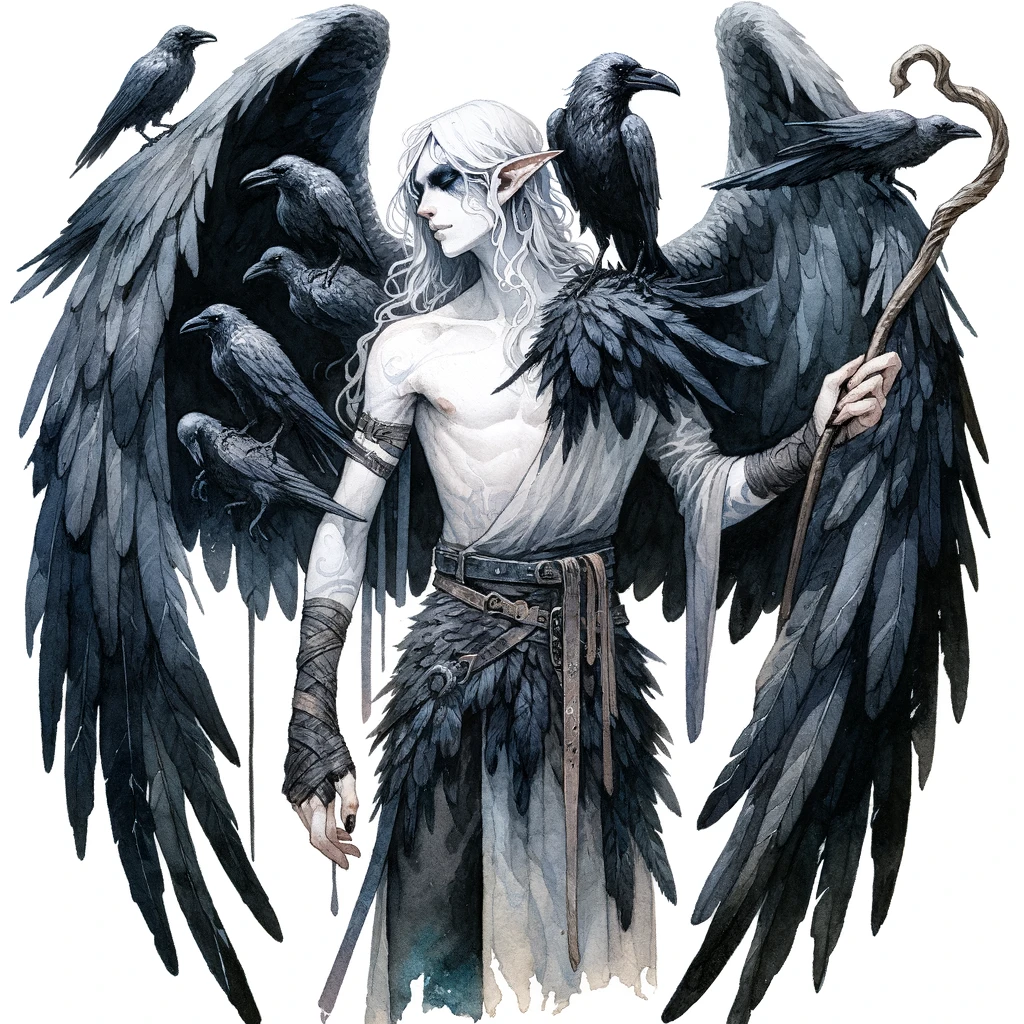
The Shepherd (planar psychopomp usher of final words, lost souls, searches [they/them] / N)
Portfolio: Final words, lost souls and searches
Realm: Wanders the Prime and Astral / River of Souls
Alignment: N
Ceyannan is a monitor demipower who arose from the River of Souls itself, born from the energy mortals expend resisting death and clinging to life. This entity is deeply connected to the whole experience of mortality—the chant goes that there’s somehow a fragment of the Shepherd residing in every mortal heart. This connection allows Ceyannan to sense those who attempt to escape death’s embrace, making them a relentless pursuer of lost souls.
Ceyannan’s primary mission is to gather wayward souls—those lost, stolen, or stubbornly resisting their fate—and return them to the Boneyard. There is a belief that when the last mortal dies and Ceyannan becomes whole again, they will finally embrace death themselves. Until that time, they tirelessly hunt for missing souls, harboring a particular animosity towards beings that destroy souls or twist them into undeath. Additionally, Ceyannan holds the responsibility of containing souls that pose existential threats to the cosmos. They possess the ability to trap the soul of a recently deceased sentient creature within a soul gem.
Physically, Ceyannan is described as having bone-white flesh, and a humanoid frame with wings covered in oily, black feathers reminiscent of a carrion bird. They are often depicted wielding the Apostasy, a shepherd’s crook with the power to extract a mortal soul’s faith in the powers. Ceyannan does not claim a specific realm as their own. Instead, they wander the Material Plane and the River of Souls, ever vigilant in their quest to recover the fragments of themselves lost within mortal hearts.
Source: Concordance of Rivals [PF1e] p7
Dammar
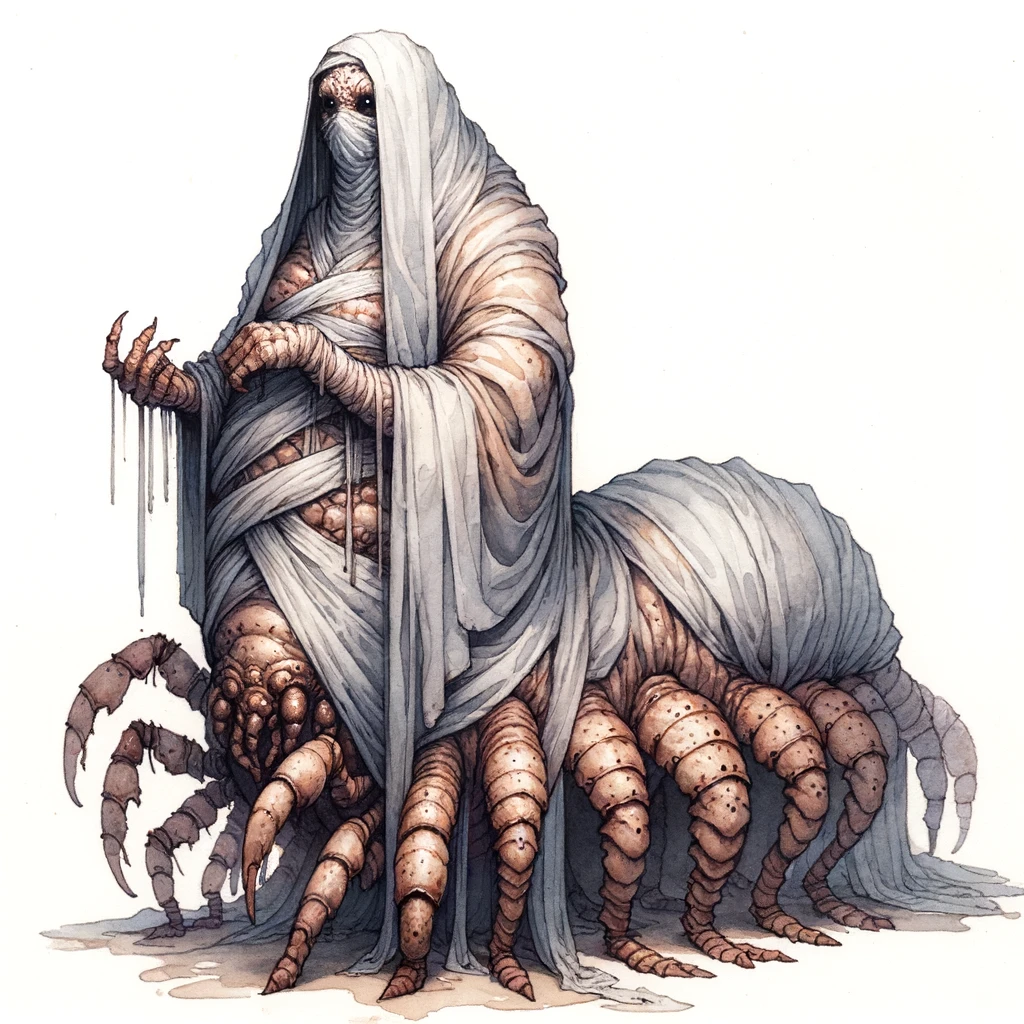
The Denied (planar psychopomp usher of liquor, luck and medicine [they/them] / N)
Portfolio: Liquor, luck and medicine
Realm: Outlands / Underlands
Alignment: N
Dammar focuses on the aspect of life rather than death. This unique role makes Dammar a critical figure in the balance between life, death, and rebirth. Known as the Denied, Dammar serves as a monitor for those attempting to return to the mortal realm from the Underlands, ensuring that such journeys are neither excessively frequent nor easily achieved.
Dammar’s concern extends beyond just the act of returning from death however. They are also recognised as the usher of doctors and medicine, reflecting a broader guardianship over the preservation of life and health. Furthermore, Dammar’s association with alcohol and its production ties them to one of the oldest and most widespread medical preparations in human history. Chant goes the creation of the hangover was down to Dammar, suggesting a whimsical intention to give mortals a glimpse of what lies beyond the veil of life.
Physically, Dammar is described as a portly, androgynous figure enshrouded in multiple layers of silk robes, with their face concealed behind a veil. Unusually, Dammar possesses many insect-like legs that protrude from beneath their robes. While they typically do not display arms, Dammar can manifest numerous arms when needed to perform various tasks. This extraordinary ability, combined with a supposed affinity for cockroaches, has given Dammar an additional reputation as the usher of insects and other creeping creatures.
Source: Concordance of Rivals [PF1e] p7
Imot
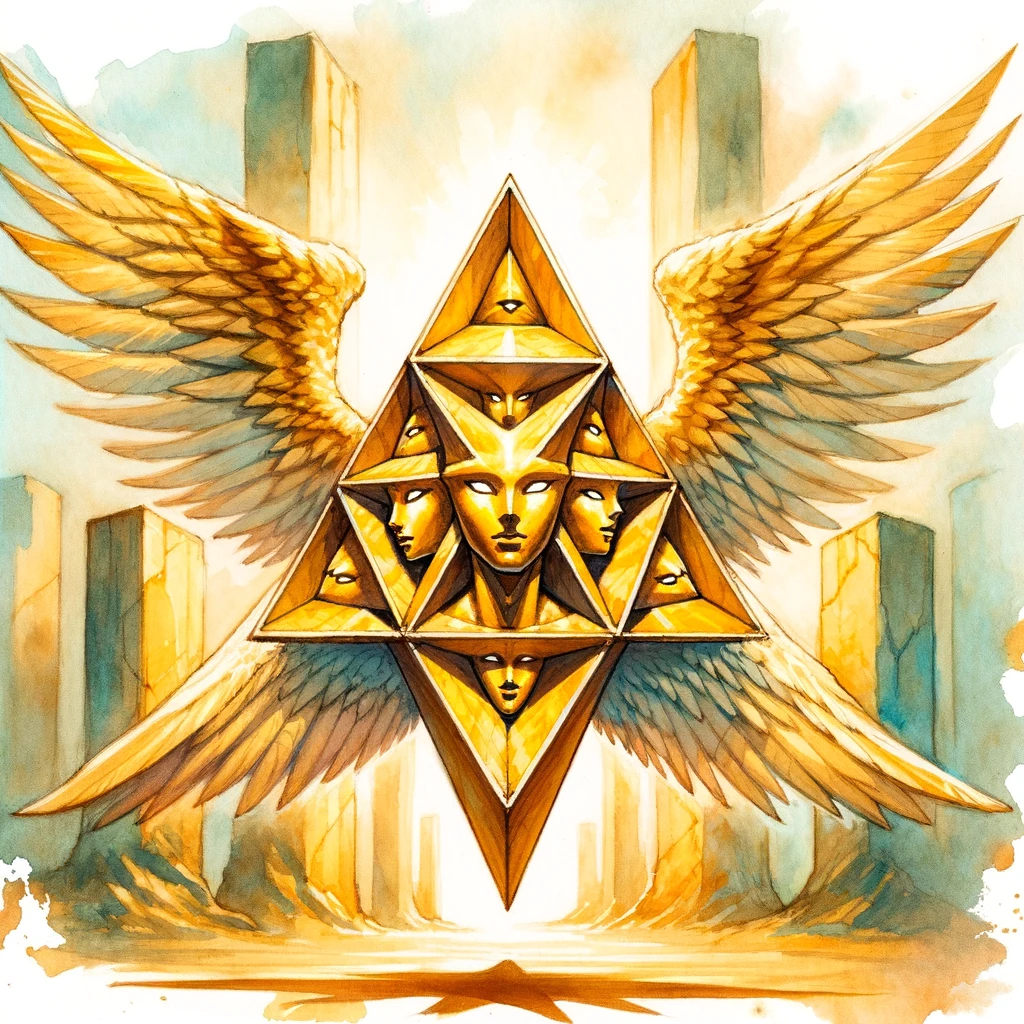
The Symbol of Doom (planar psychopomp usher of inevitability, mathematics, portents [they/them] / N)
Portfolio: Inevitability, mathematics and portents
Realm: Outlands / Underlands / Tetravia
Alignment: N
Imot is a unique and complex figure, whose existence is rooted in mortal guilt and the yearning for hindsight following tragedies. Unlike other ushers who may directly cause loss of life, Imot’s role is more subtle and insidious. They’re involved in the events leading up to large-scale disasters, sometimes even orchestrating them when cultures fail to evolve or end naturally.
Imot is driven by a deep-seated compulsion to leave behind clues about impending disasters in the natural world. These clues are cryptic, wrapped in confounding symbolism and complex equations. To the uninitiated, these omens manifest as subconscious unease or anxiety, while those aware of Imot’s nature might see them as an opportunity to avert disaster, albeit often too late. As a result, Imot is regarded as the usher of dread, paranoia, self-blame, and the fear of personal failure.
In addition to being connected to large-scale deaths, Imot is seen as the patron of mathematicians, particularly those pushing the boundaries of understanding, and those who perish in what seem like inevitable circumstances or mass casualties. Prophets and seers are drawn to Imot’s enigmatic and elusive signs, hoping to decode these for foresight.
Imot’s physical manifestation is as a golden, four-sided pyramid with a wing on each facet. Their method of communication is non-verbal, relying on the conjuring of images and symbols. This unique form of interaction is challenging even for their fellow ushers and those who serve them, with only the most devoted eventually learning to understand this language. Sages have wondered whether Imot is speaking the same language as Sigil’s dabus, only more cryptically.
Imot resides in the Tetravia, a realm of crossroads and towers located between the Eight Courts. From this vantage point, they observe the mortal world and the Outer Planes, continuously seeking new patterns and secrets.
Source: Concordance of Rivals [PF1e] p9
Mother Vulture
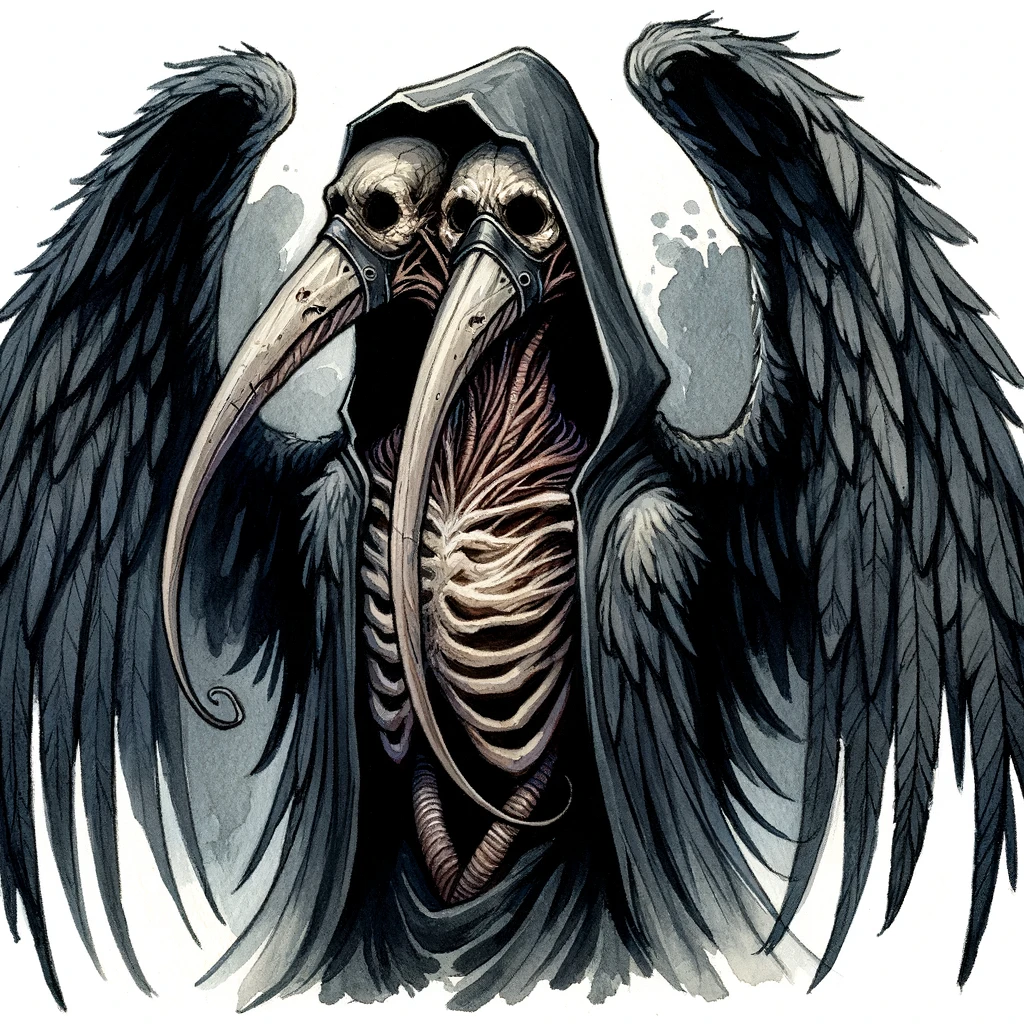
The Flesheater (planar psychopomp usher of consumption, renewal, transformation [she/her] / N)
Portfolio: Consumption, renewal and transformation
Realm: Outlands / Underlands / the Rasputitase
Alignment: N
Mother Vulture embodies the duality of rot, symbolising both the destruction and the new life that springs from it. As an usher, her role is deeply intertwined with the cycles of life and death, creation and decay.
Known for her merciless nature as a killer, Mother Vulture is also a nurturing figure, embodying the role of a thoughtful mother. She is known to embrace newborns and bestow blessings upon midwives, granting them longevity. This dual nature highlights the intricate balance between the harsh realities of death and the nurturing aspects of life.
In a more gruesome role, Mother Vulture consumes the bodies of Pharasma’s enemies. This act of devouring is not merely destructive; it is a process of transformation, as from this consumption, she births new psychopomps to serve in the Underlands. Her feasts leave behind fertile soil and the potential for new growth.
Her physical appearance reflects her and multifaceted nature. While she can appear as a young, blind mother, her true form can be repulsive to observers. She possesses two masked heads, barely supported by distended necks that force her to hunch low to the ground. Her body is concealed beneath black-feathered wings, which she unfurls when feeding on new flesh. This existence as a grotesque yet nurturing entity highlights her complex role as an usher.
Source: Concordance of Rivals [PF1e] p12
Mrtyu
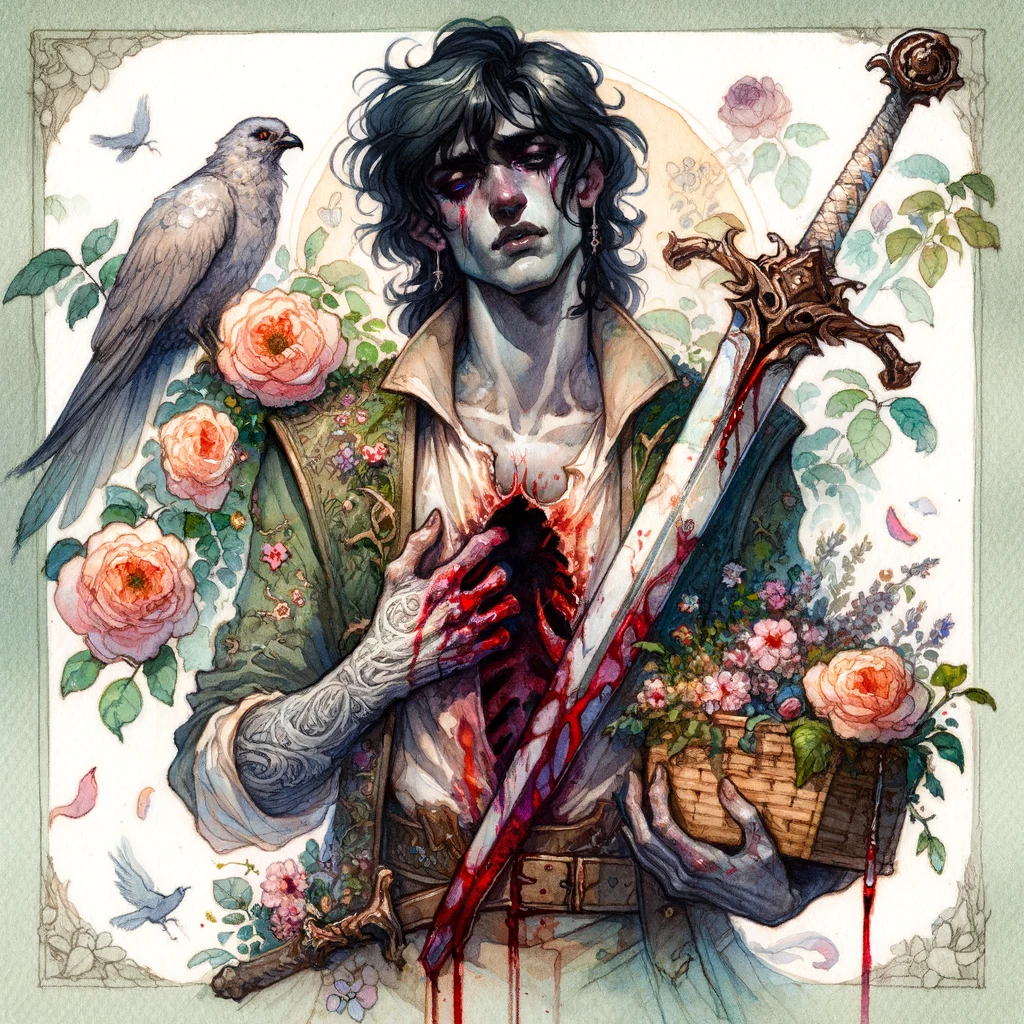
Death’s Consort (planar psychopomp usher of poetry, trauma, war [he/him] / N)
Portfolio: Poetry, trauma and war
Realm: Outlands / Underlands / Garden Anima
Alignment: N
According to the chant, Mrtyu was the first mortal to die with love on his lips, an event that piqued the interest of Pharasma. Intrigued by his display of emotion, Pharasma wooed Mrtyu’s soul, and through him she came to understand the emotions of the living. Even after being reincarnated as a psychopomp Mrtyu retained his strong passions, a trait that is rather rare in the largely emotionless Boneyard.
In appearance, Mrtyu retains a semblance of his mortal origins. He is depicted as a beautiful young man with deep, dark sunken eyes, adorned with rock blossoms, and perpetually bleeding from a wound in his stomach. He carries a basket of fresh fruit or flowers in one hand and his rusted greatsword, Ardor, in the other.
Mrtyu’s role extends beyond companionship with Pharasma. He is the usher of souls who have died in the grips of extreme emotion, encompassing soldiers, murder victims, and those who have succumbed to suicide. He is attuned to the emotional undercurrents of death, feeling the emergence of ghosts, wights, and other restless undead as personal failures.
In his capacity as a protector, Mrtyu commands the defences of Pharasma’s realm and often collaborates with the Pale Horse in combating threats to the Gray Lady. His own domain reflects his dual nature as both a fighter and a lover. Mrtyu’s realm within Pharasma’s Court, the Garden Anima, serves as a serene refuge for souls needing time to reflect and recover from traumatic deaths. While he occasionally appears at Pharasma’s side, their connection is described more as an emotional bond rather than a physical one.
Source: Concordance of Rivals [PF1e] p12
Narakaas
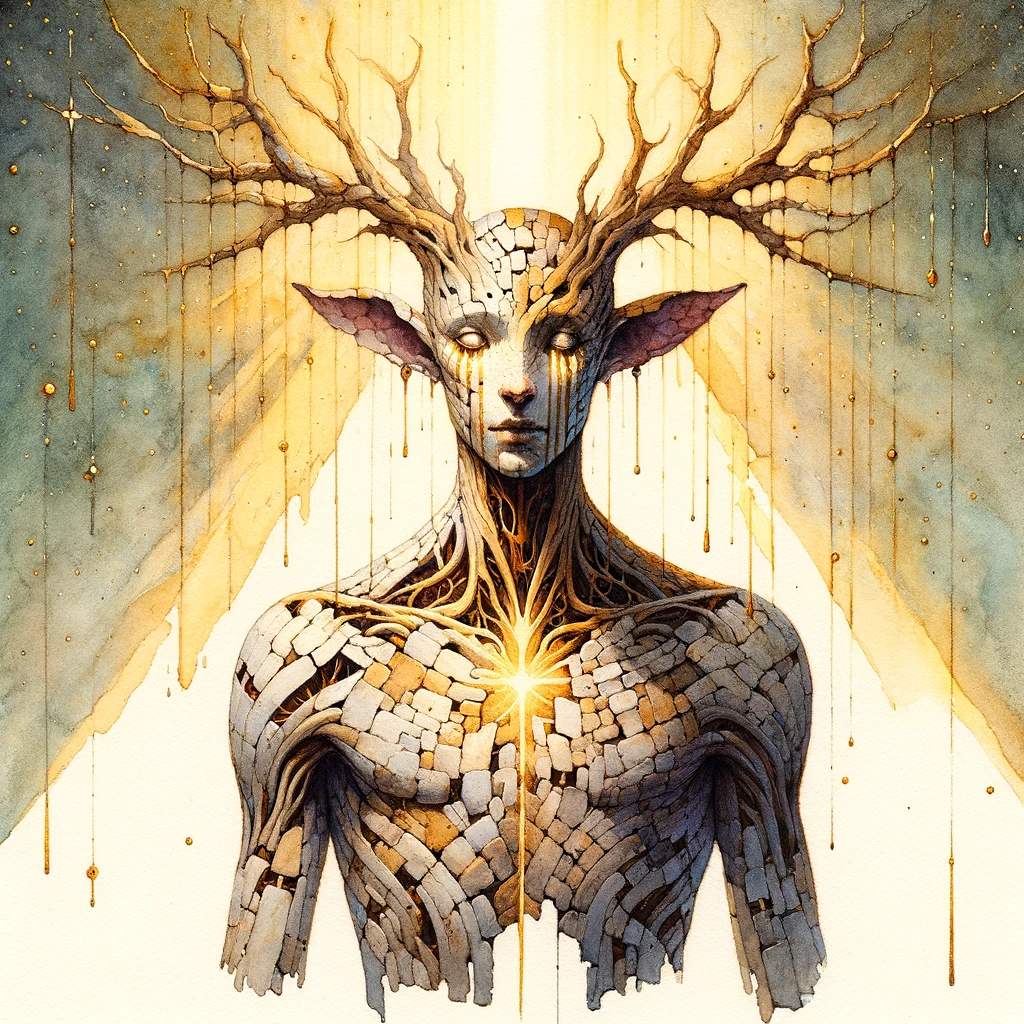
The Cleansing Sentence (planar psychopomp usher of atonement, difficult choices, pain [they/them] / N)
Portfolio: Atonement, difficult choices and pain
Realm: Outlands / Underlands / Menagerel
Alignment: N
Narakaas, known as the Cleansing Sentence, is a composite entity, and embodies a philosophical and complex aspect of the soul’s journey. They are born from the fragments of souls that are shed as mortals evolve, discard parts of themselves, and undergo countless metaphorical little deaths throughout their lifetimes. Narakaas represents the idea that change and the breaking away of parts of oneself are not diminishing but rather an enriching process.
Narakaas acknowledges that personal change in mortals is often difficult and painful, both physically and emotionally. Some souls find themselves caught between two extremes or unable to complete their transformation before death. To these souls, Narakaas offers the option of enduring pain or undertaking challenging tasks as a means of proving their commitment to either redemption or damnation. This role also includes judging good mortals who have been driven to terrible deeds by their beliefs and convictions, testing them to determine the true nature of their souls.
Representing the acceptance of pain as a catalyst for growth, Narakaas does not take pleasure in suffering. Despite their association with pain and transformation, Narakaas is surprisingly optimistic, believing strongly in the power of redemption. They have even managed to convert a number of kytons to the cause of the Boneyard.
In appearance, Narakaas manifests as an androgynous, humanoid form with stag-like legs, composed of thousands of small pieces held together by golden light. Their face is simple and expressionless, marked only by tear-stained streaks, reflecting the sorrow and pain inherent in their domain.
Their divine realm, Menagerel, mirrors Narakaas’s own nature. It is a patchwork world, constructed from a thousand painful memories of home, embodying the myriad experiences of loss, change, and growth that souls undergo throughout their mortal lives.
Source: Concordance of Rivals [PF1e] p13
The Pale Horse
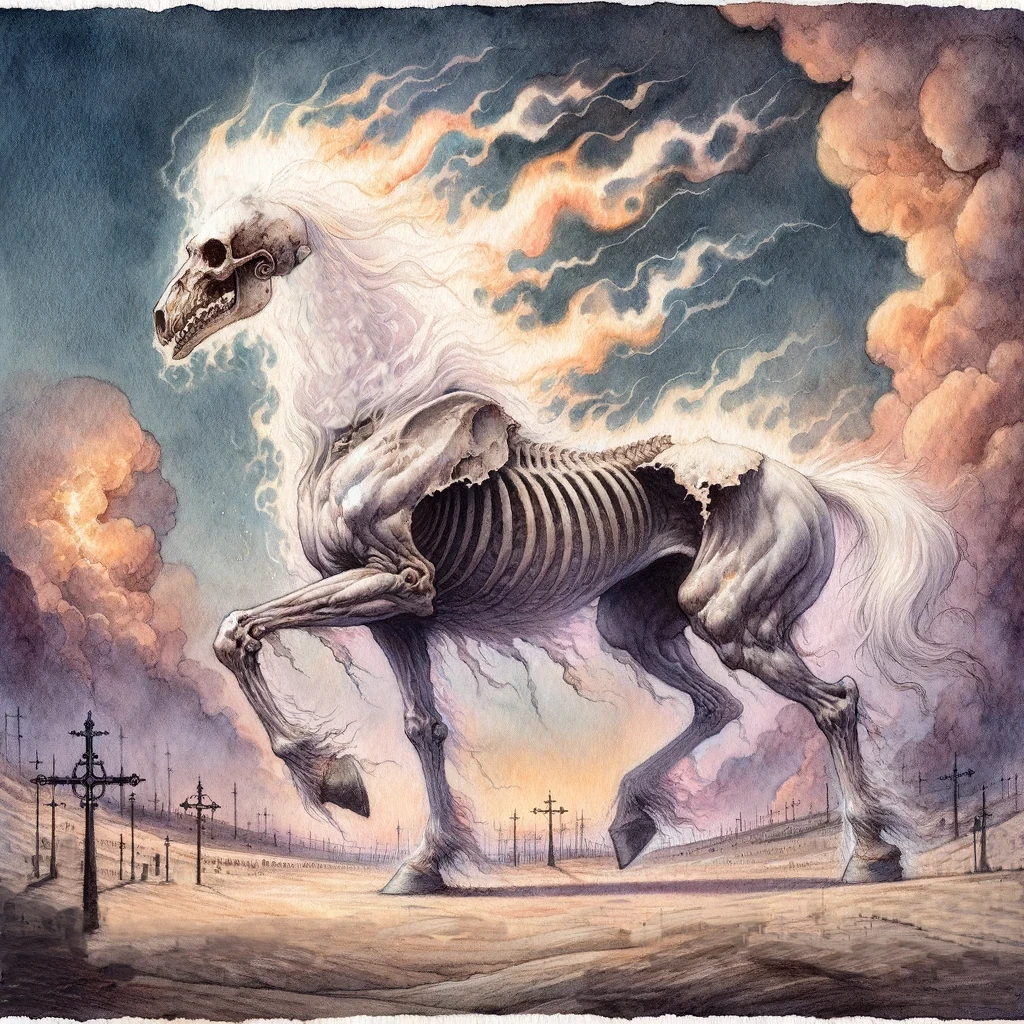
The Lash and the Plough (planar psychopomp usher of duty, revenge, beasts of burden [he/him] / N)
Portfolio: Duty, revenge and beasts of burden
Realm: Outlands / Underlands / Abatory
Alignment: N
The Pale Horse embodies the concepts of redemption, servitude, and vengeance. Originally, the Pale Horse was a formidable entity that roamed the Astral Plane, indiscriminately stealing souls from the River of Souls and indulging in their suffering. The nature of this being, whether a daemonic harbinger or a Fifth Horseman, remains a subject of debate. However, over time, burdened by the freedom of choice and leadership, the Pale Horse grew disillusioned with his existence, weighed down by the choices he had to make and the souls he consumed.
In a pivotal moment, the Pale Horse experienced a profound change of heart, abandoning his daemonic nature and seeking servitude as a means of escape from his burdens. Pharasma offered him a chance for redemption if he could save a significant number of souls, more than he had previously damned. Overwhelmed with relief, the Pale Horse willingly submitted himself to Pharasma’s service, finding joy in his newfound purpose.
Since then, the Pale Horse has transformed into an avenging angel for Pharasma, hunting those who commit the same transgressions he once did. He takes satisfaction in his duties, adhering strictly to the tenets set by Pharasma, with his soldiers following his lead unquestioningly. The Pale Horse represents the dual aspects of servitude—both its pain and its rewards. He guides souls who have died in service as well as those who have died alone due to their own choices.
The Oinoloth, recognising the threat posed by the Pale Horse, has erased his true name from yugoloth records. Despite his apparent loyalty to Pharasma, there is lingering concern among other psychopomps that the Pale Horse’s true nature as a daemon might still lie beneath the surface, and that he might eventually seek revenge upon the Boneyard once his sentence is complete.
Physically, the Pale Horse manifests as a powerful white stallion, lacking a head or neck but featuring a disembodied skull and a floating crown of flames. He can also appear as a silent rider atop a white horse. His domain, Abatory, mirrors the desolation of the Gray Waste, and is distinguished by the silent vanths that haunt its walls and hills.
Source: Concordance of Rivals [PF1e] p15
Phlegyas
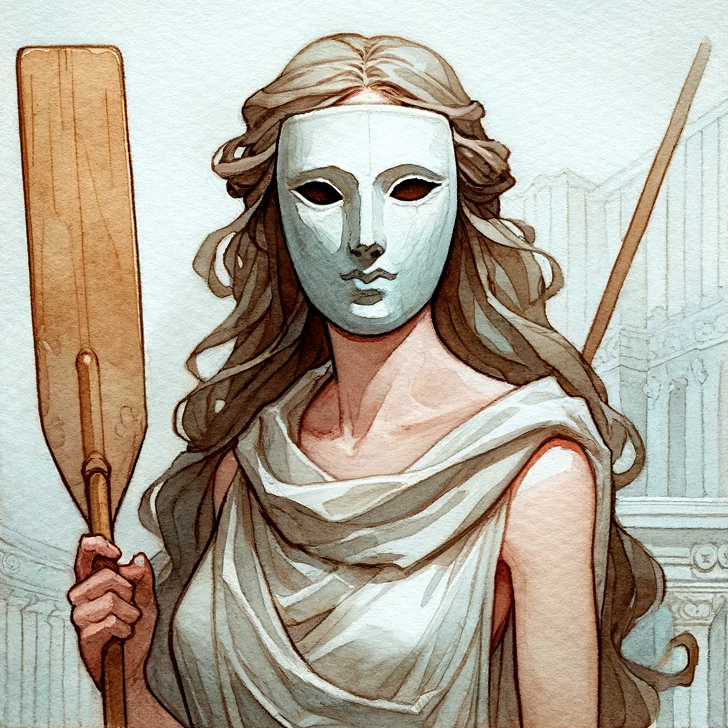
The Consoler of Atheists (planar psychopomp usher of atheists, legacies, reincarnation [they/them] / N)
Portfolio: Atheists, legacies and reincarnation
Realm: Outlands / Underlands / Anonymous Loggia
Alignment: N
Phlegyas oversees a diverse portfolio of interests, including immortality, creativity, and the complex relationship between mortals and the divine. In life, Phlegyas was an individual of remarkable talent but also of arrogance. Their actions led to expulsion from the church a goddess of beauty, art, and love, due to their blasphemy and pride. Despite efforts by the clergy to erase his legacy, Phlegyas’s name endured, preserved by both admirers and detractors.
Pharasma recognised in Phlegyas a unique form of immortality that is integral to the mortal experience. She elevated Phlegyas to the status of an usher, reincarnating the cutter as a patron of art that outlasts its creator and of those who reject the divine. This role places Phlegyas as a symbol of creation’s endurance beyond the lifespan of its creator, and additionally, as the usher of new parents, particularly those who perish in childbirth. Phlegyas also represents the concept of resonance. The art and creations inspired by Phlegyas can evoke a range of emotions, from pain and horror to beauty and awe.
Over time, Phlegyas’s view of the divine has evolved, shedding much of the earlier resentment. Now, Phlegyas and their servants offer solace to atheists who arrive in the Boneyard. They reserve those godless souls showing potential for training as psychopomps, guiding them in their new roles in the afterlife.
Phlegyas is described as the most human-like among the ushers. They are a tall, broad-shouldered androgynous cutter, donning a simple, plaster domino mask and wielding an oar, symbolic of their role in ferrying those who have rejected the call of the gods.
Their realm, the Anonymous Loggia, is akin to a museum, filled with works by creators long forgotten yet whose creations remain important in mortal cultures. This space serves as a testament to the enduring impact of art and creativity, regardless of the recognition or memory of the artist. It is especially popular with the Athar.
Source: Concordance of Rivals [PF1e] p16
Saloc
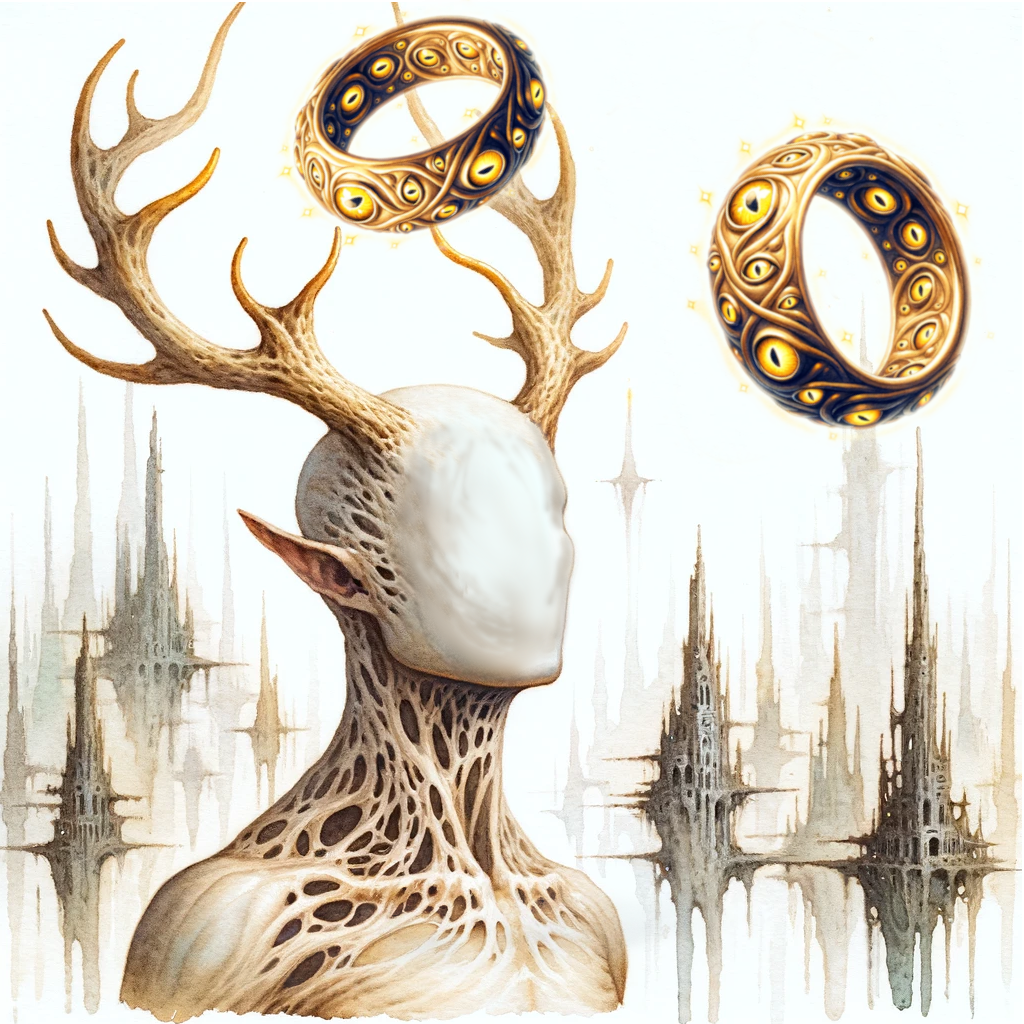
The Minder of Immortals (planar psychopomp usher of agency, bronze, education [they/them] / N)
Portfolio: Agency, bronze, education
Realm: Outlands / Underlands / Spire’s Edge
Alignment: N
Saloc, known as the Minder of Immortals, is an usher concerned with mortal agency and the soul’s journey. Saloc is invested in the concept of personal intent and the narrative of mortal lives, advocating that intentions and personal experiences should be counted in the judgment of souls, not just the consequences of their actions.
Saloc’s role includes providing defence for souls on trial in the Boneyard, emphasising the soul’s own recounting and intentions, challenging the judgments based solely on outcomes. Saloc has even resurrected mortals whose souls’ judgments were deemed unfair, offering them another chance
to demonstrate their true nature. This practice often puts them at odds with other psychopomps and particularly with Vale, who views Saloc’s tactics as irresponsible. As the solicitor of will over context, Saloc holds a unique position of authority, even over deities. However, Saloc seldom exercises this judgment, given the rarity of such cases.
Saloc’s existence predates most other ushers and many gods. The chant goes they were born from the mortal need to justify and defend one’s own actions and decisions. Their form is roughly humanoid, with a featureless face crowned by stag horns and their head orbited by two golden rings studded with eyes.
The Minder of Immortals presides over Spire’s Edge, a vast, twisting metropolis on the Underlands where the least-developed souls of the Boneyard reside. Here, these souls either find their purpose or fade away into cosmic dust.
Source: Concordance of Rivals [PF1e] p16
Santa Muerta
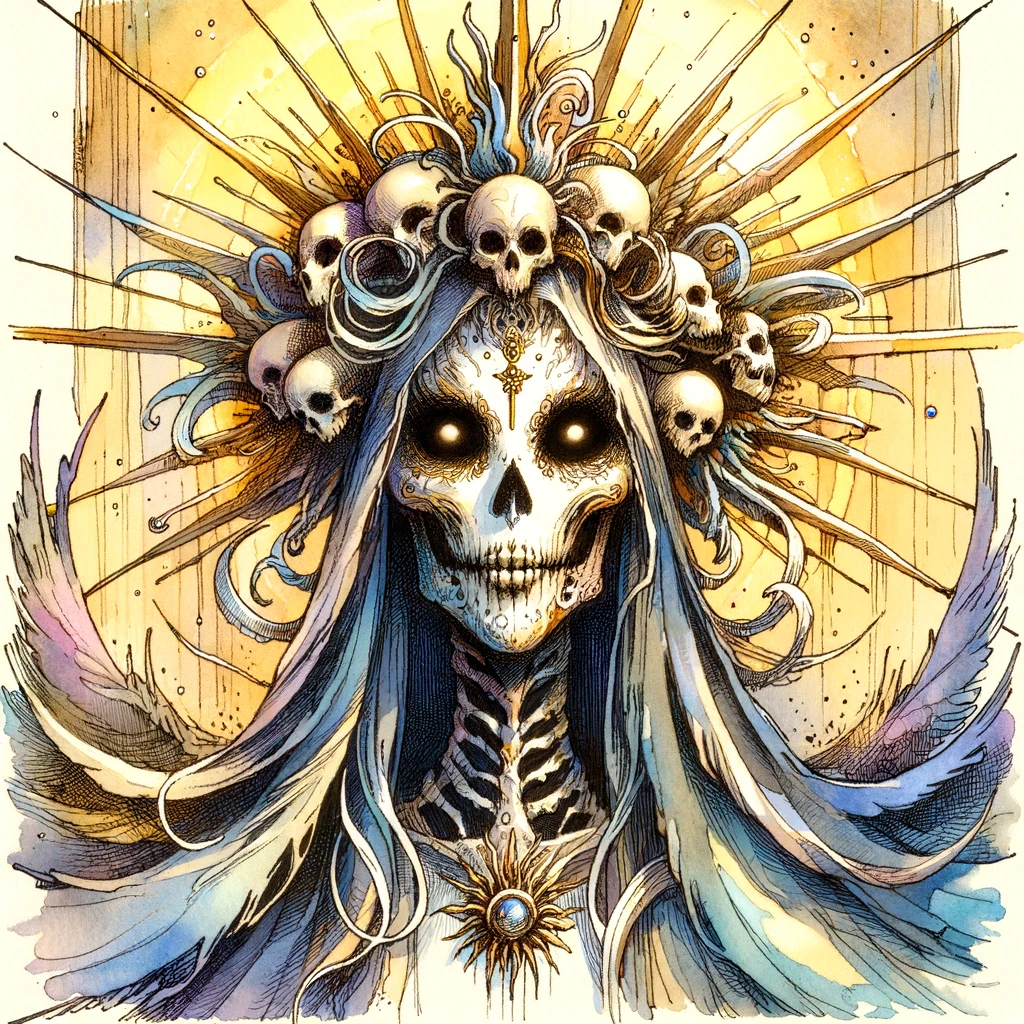
Our Lady of Holy Death, Mistress of Thresholds (planar psychopomp usher of thresholds, transition, soul contracts [she/her] / N)
Portfolio: Thresholds, transitions and journeys
Realm: Outlands / Underlands / Twilight Expanse
Alignment: N
Unlike other ushers whose domains are often tied to specific aspects of death or the afterlife, Santa Muerta’s realm and responsibilities are dynamic and encompassing, for she focusses on the concepts of transitions and thresholds.
The Mistress of Thresholds oversees the myriad transitions that souls undergo in their journey through the afterlife. Her domain is not confined to a single aspect of death but encompasses the many liminal spaces that travelling souls must cross, from the moment of death to their final judgment and beyond.
Santa Muerta watches over the literal and metaphorical crossroads where souls make crucial choices. She occasionally guides souls at these pivotal moments, offering unrequested insights of wisdom or advice in the form of cryptic omens. She aids souls in transitioning not just through death, but through life’s critical moments, and tends to be invoked for guidance during crucial life decisions—in this respect she is one of the few psychopomps that cutters aren’t afraid to name out loud.
She is also a mediator of soul contracts, agreements and pacts made by souls, both in life and after death. This includes overseeing bargains struck with otherworldly entities, ensuring they are kept or appropriately adjudicated if broken. The chant goes she is the blood behind the Dead Truce that the Heralds of Dust enjoy.
Santa Muerta is also the patron of souls that have been forgotten or abandoned, ensuring they are not left behind in the cosmic process. She provides solace and direction to these lost spirits, helping them find their path in the afterlife.
She manifests as a regal and enigmatic figure, draped in robes that shimmer with all the colours of twilight. Her face is often veiled, symbolising the mysteries she guards. In one hand, she holds a lantern that sheds light on dark paths, and in the other, a key that unlocks the gates between realms. Her hair is decorated with skulls and shards (blades?) of radiant light shine from her head.
Her realm, known as the Twilight Expanse, is a vast, ever-changing landscape that reflects the many transitions of the soul. It’s filled with doors, gates, and pathways leading to different realms of the afterlife. The Expanse shifts and changes, just like the choices and paths of the souls that traverse it. The Expanse is lit with candles of different colours—once a cutter tumbles to the dark of what each colour means, they should find passage to their destination a little easier. Many souls pass through this place after their ultimate judgement in Pharasma’s courts; at least, the ones who behaved themselves.
One permanent fixture of the Twilight Expanse, is an altar where the offerings left by cutters on the Prime may materialise; garnishes to Santa Muerte to protect or bless them or their loved one on their journey. This altar serves as a point of communion between the living and the dead, a concept deeply ingrained in the veneration of Santa Muerte.
Source: Jon Winter-Holt, mimir.net, loosely based on the Mexican culture’s Santa Muerta figure, more on that here.
Shadix Who Dreams
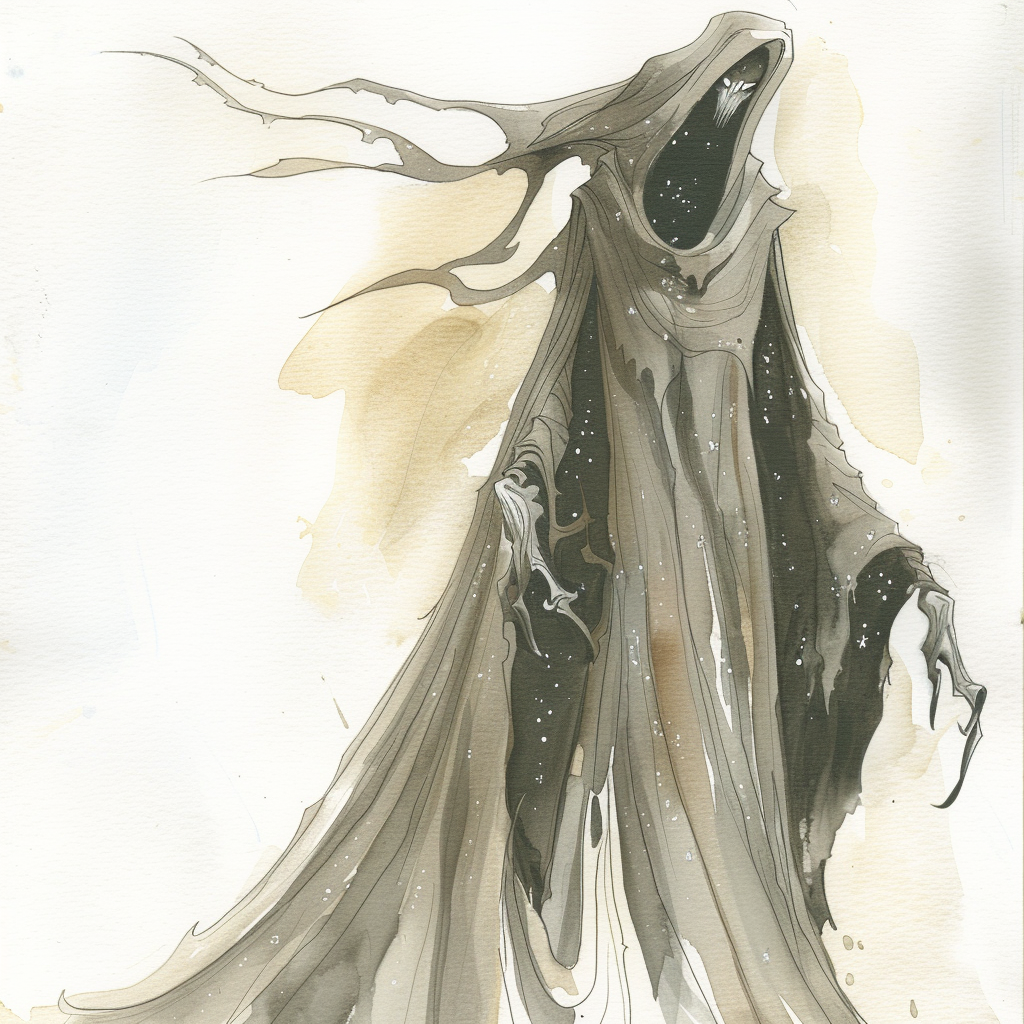
The Gentlest Repose, the Lord who Slips Away [they/them] / N)
Portfolio: Souls of cutters who pass away in their sleep
Realm: Outlands / Underlands / The Silent Tomb
Alignment: N
This enigmatic psychopomp usher is a figure draped in mystery and nightmare-stuff. Shadix is responsible for escorting the souls of those who die in their sleep, a task that requires compassion and an unyielding sense of duty. These souls often awaken in the River of Souls in a state of confusion and fear, beyond the ability of even the catrina to handle. It is the role of Shadix to quell their alarm, guiding them gently but firmly to their destined afterlife.
The form of Shadix Who Dreams is ethereal, shifting like the fabric of hallucinations. They stand tall and slender, with a flowing, almost liquid-like robe that appears to be woven from the shadows of night. Their face is a blank canvas, featureless and smooth, reflecting the unknowable depths of the dreamscape. From beneath the hood of their robe, one can sometimes catch a glimpse of swirling, star-like patterns.
Their hands are elongated, with fingers that taper into delicate, silver talons capable of both gentle touches and sharp incisions into the veil of reality. The most sinister aspect though are their eyes—or rather, the lack of them. Instead of eyes, Shadix possess twin orbs of pure, glowing darkness that seem to absorb light and give nothing back.
Shadix has the uncanny ability to enter the dreams of those who are about to die in their sleep. They weave their essence into the fabric of these final dreams, subtly altering the dreamscape to prepare the soul for its imminent departure. They can appear as anything—a comforting figure, a guide, or even an old friend—always aiming to ease the soul’s transition from life to death.
Chant goes that Shadix is also responsible for dreams containing omens of death. This is their way of preparing the living for the inevitable, giving them a subtle nudge and a chance to reconcile unfinished business or come to terms with their mortality. Omens can take many forms: a shadowy figure at the end of a long hallway, a mirror that reflects an older, more withered version of the dreamer, or a clock that ticks down to the final hour. These dreams are not meant to terrify, though they often do. Instead, they’re a form of divine mercy, a whispered warning that the end is near. Shadix understands that the unknown is far more fearsome than the known, and by providing these omens, they offer a semblance of control and preparation to the dreamer.
Why does Shadix undertake their solemn duty? The dark is that they were once a mortal who met their own end in the peaceful embrace of sleep, only to awaken in the afterlife lost and terrified. Pharasma, moved by their plight, bestowed upon Shadix the duty of psychopomp usher, allowing them to help others avoid the same fate of having to face the afterlife alone and bewildered.
Source: Jon Winter-Holt, mimir.net, inspired by Strange Aeons — the Thrushmoor Terror p63 [PF1e]
Teshallas
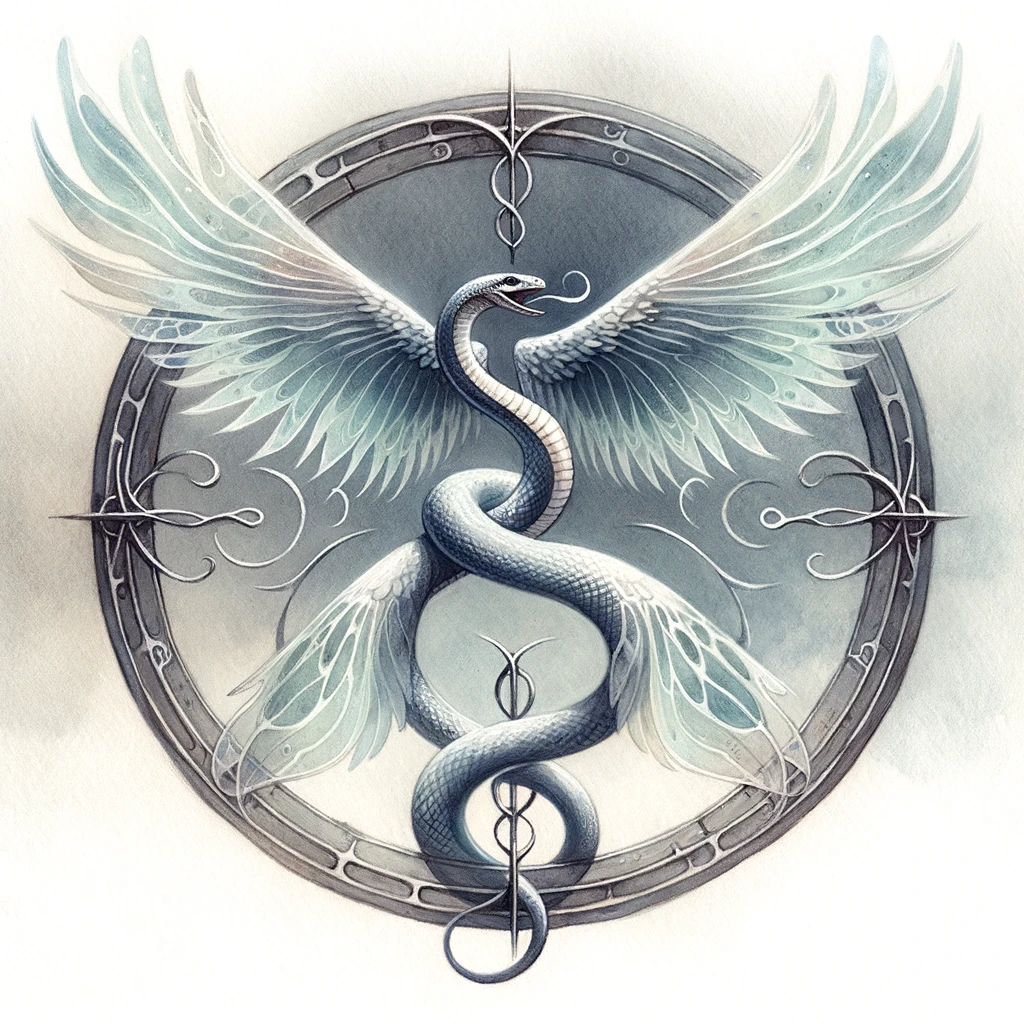
The Primordial Poison (planar psychopomp usher of aging, poison, venomous creatures [they/them] / N)
Portfolio: Aging, poison and venomous creatures
Realm: Outlands / Underlands / Bower Antimony
Alignment: N
Teshallas, known as the Primordial Poison, embodies the inevitable process of aging and the paradoxical nature of poison. Fashioned from a serpent by Pharasma herself, Teshallas signifies the slow but sure passage of time that affects all mortals. The venom of Teshallas, a metaphor for the aging process, courses through the veins of mortals, gradually diminishing their memory, passion, and vitality, leading them to eventually welcome the embrace of death.
Also Teshallas embodies the dual nature of poison—while it often brings death, it can also hold the capacity to protect, heal and rejuvenate, illustrating that elements that can harm can also be sources of healing and growth. Teshallas serves as the patron of herbalists and practitioners who transform nature’s dangerous substances into medicinal cures. This patronage represents the knowledge and skill required to harness the beneficial aspects of what might otherwise be lethal. Additionally, Teshallas is closely associated with cold-blooded creatures such as kobolds, lizardfolk, and serpentfolk, overseeing the souls of intelligent reptilians.
In their physical manifestation, Teshallas appears as a serpent devouring its own tail, an ancient symbol of the perpetual cycle of life, death, and rebirth known as the Ouroboros. The usher also has four ethereal feathered wings, not physically connected to their body,.
Teshallas resides in the Bower Antimony, a steaming greenhouse brimming with poisonous plants and medicinal herbs. Good luck picking the right one, cutter! Worshippers of Teshallas often maintain similar gardens, paying homage to the usher through the cultivation and understanding of these flora. They use the crops from these gardens to distill a variety of medicines, symbolising the transformation of something potentially deadly into something healing.
Source: Concordance of Rivals [PF1e] p18
Vale
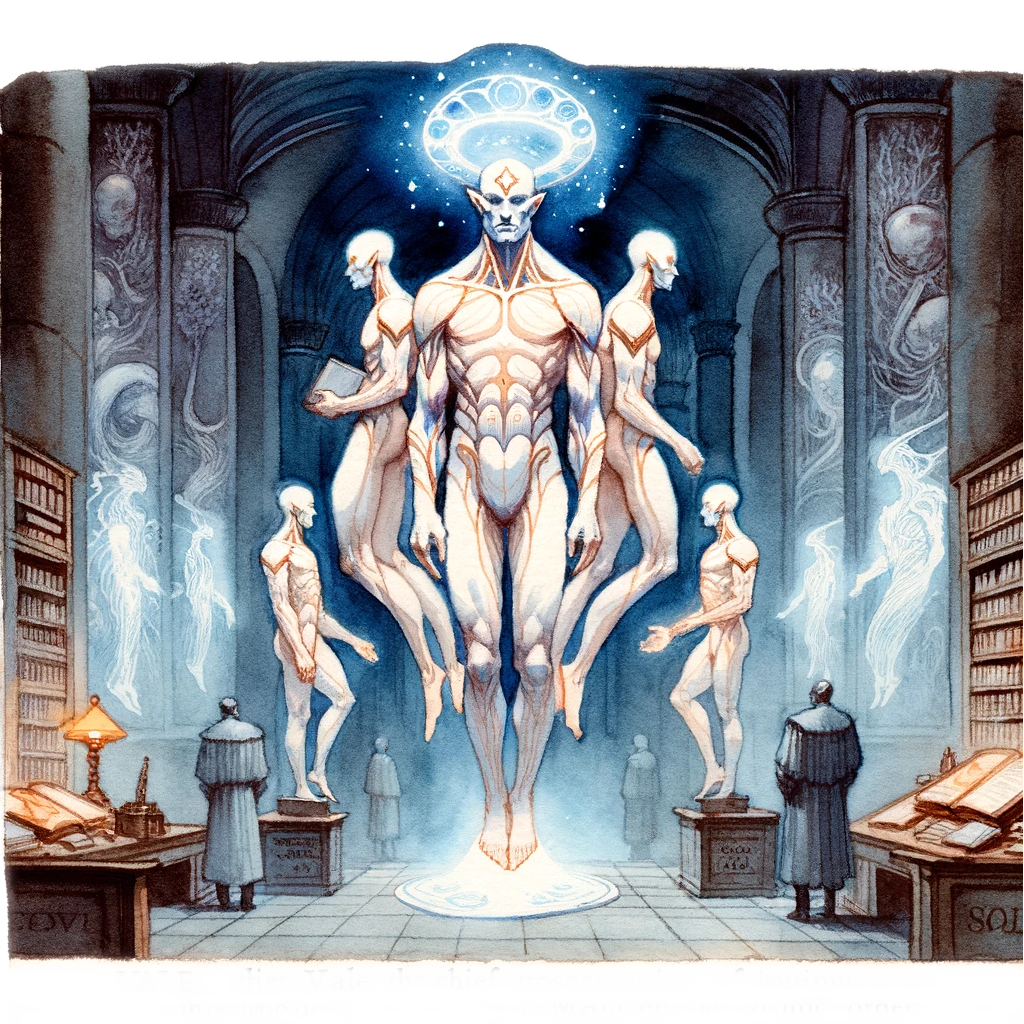
The Court of Ancestors (planar psychopomp usher of consequence, superstition, tradition [they/them] / N)
Portfolio: Consequence, superstition and tradition
Realm: Outlands / Underlands / Mall of Jurisprudence
Alignment: N
Vale is the chief prosecutor in the Boneyard, the realm where souls are adjudicated post-mortem. Vale’s principal duty revolves around championing the judgment of souls based purely on their actions and external impacts. This unique perspective places a significant emphasis on the tangible, observable effects of a soul’s life, rather than its internal motivations or intentions.
Vale is also an advocate for those who lived agnostic lives. They serve as a guiding light for souls who journeyed through life without committing to specific deities or religious doctrines. This aspect of Vale’s role underscores their position as a gatherer of knowledge and understanding, encompassing a wide spectrum of beliefs and practices beyond conventional religious frameworks. Yes cutter, you can bet that a lot of dead Athar end up here.
Vale’s expertise extends to realms of faith that do not directly involve gods, such as cultural superstitions, bringing a nuanced understanding to the judgment of souls.
The manifestation of Vale is certainly unusual. They appear as a confluence of several naked, androgynous figures capable of merging into one being. This form represents the diversity of perspectives drawn from a range of mortal cultures. Adding to their striking appearance is a floating crown of white crystal, symbolising the clarity of their judgment.
Vale’s domain, known as the Mall of Jurisprudence, is a sprawling network of libraries and offices, where legions of nosoi collect and transcribe vast knowledge.
Source: Concordance of Rivals [PF1e] p18
Vavaalrav

The Steeple’s Skull (planar psychopomp usher of gargoyles, holy ground and rest [he/him] / N)
Portfolio: Gargoyles, holy ground and rest
Realm: Outlands / Underlands / the Wailing Tor
Alignment: N
Vavaalrav is known as the brooding master of the spires and steeples. His existence as the architect of the Boneyard, is a manifestation of the mortal need to leave an enduring legacy for those who have departed. Vavaalrav is revered and feared as the patron and protector of sacred sites. His presence is synonymous with the sanctity of these spaces, and his cold, earthy breath is what infuses the world’s mausoleums, temples, and tombs with their aura of eerie reverence.
Vavaalrav’s intolerance for the desecration of sacred spaces has deeply influenced mortals. The superstitious often etch his holy symbol into tombs and fashion headstones in its likeness, believing this will protect them from being defiled by foul spirits and grave robbers. The gargoyles found perched on cathedrals and temples, are believed to owe allegiance to Vavaalrav, acknowledging his sovereignty over these structures.
The physical manifestation of Vavaalrav is as imposing as his reputation. He appears as a skeletal gray figure with stone wings, in a breastplate draped with a robe also made of stone. He has three eyes on his right hand. His countenance remains a mystery, as the upper half of his head is perpetually veiled by a delicate silk covering that shrouds his face from view.
Vavaalrav resides in the Wailing Tor, a lofty, steepled tower situated in the heart of the Eight Courts of the Boneyard. This domain is an eerie place where continuous echoes of solemn reverence and mourning reverberate.
Source: Concordance of Rivals [PF1e] p20
Vonymos
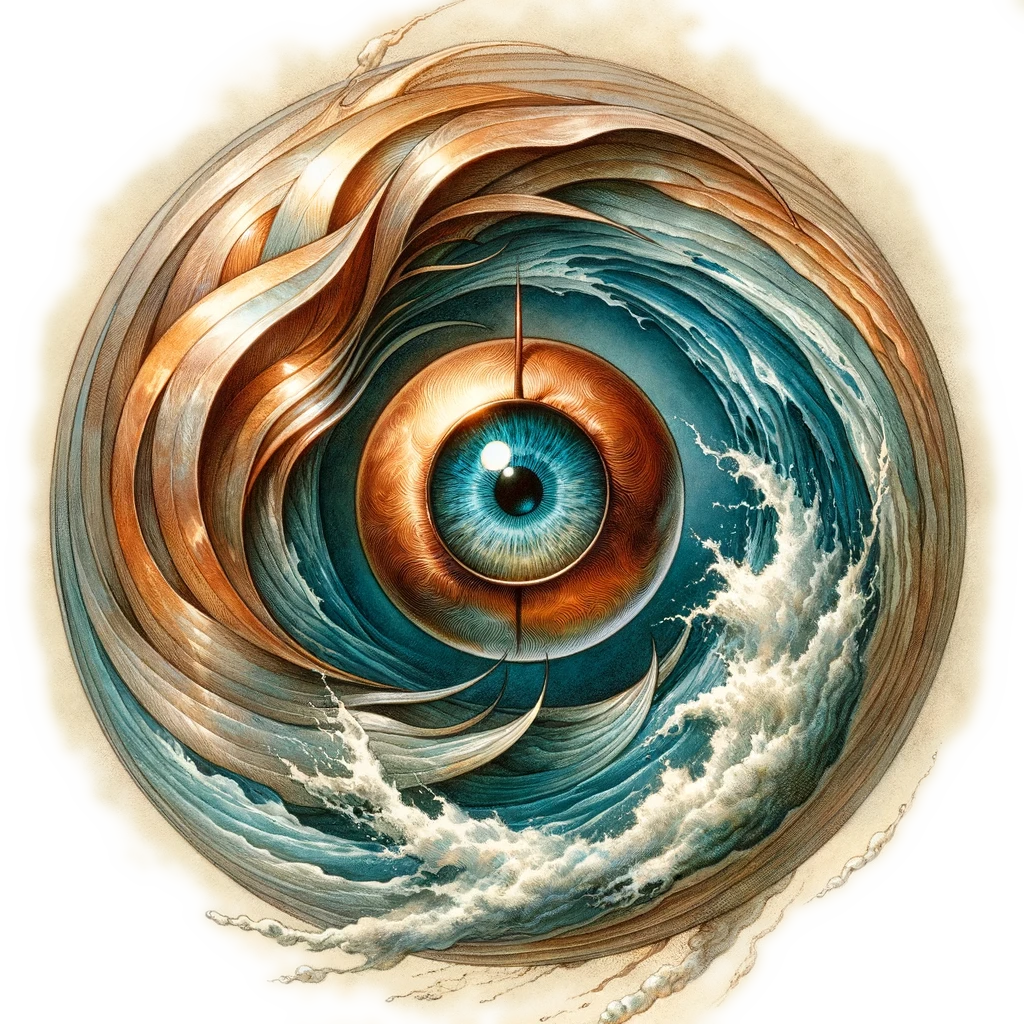
The Mourning Storm (planar psychopomp usher of catastrophes, lasts stands and suicides [they/them] / N)
Portfolio: Catastrophes, lasts stands and suicides
Realm: Outlands / Underlands / Storm of Shards
Alignment: N
Vonymos arose from the profound depths of grief that mortals experience in the wake of loss. This usher embodies the dual aspects of mourning, representing the spectrum of emotions and reactions that stem from sorrow. On one hand, Vonymos is synonymous with the darker facets of grief, such as depression, isolation, and desperation; the intense emotional turmoil that can engulf individuals as they grapple with loss. Conversely, Vonymos also represents more resilient responses to grief, including the surge of glorious last stands and the discovery of renewed vigour in the face of despair. In this sense, Vonymos serves as a muse to the other ushers, inspiring them to actions arising from the atmosphere of mourning.
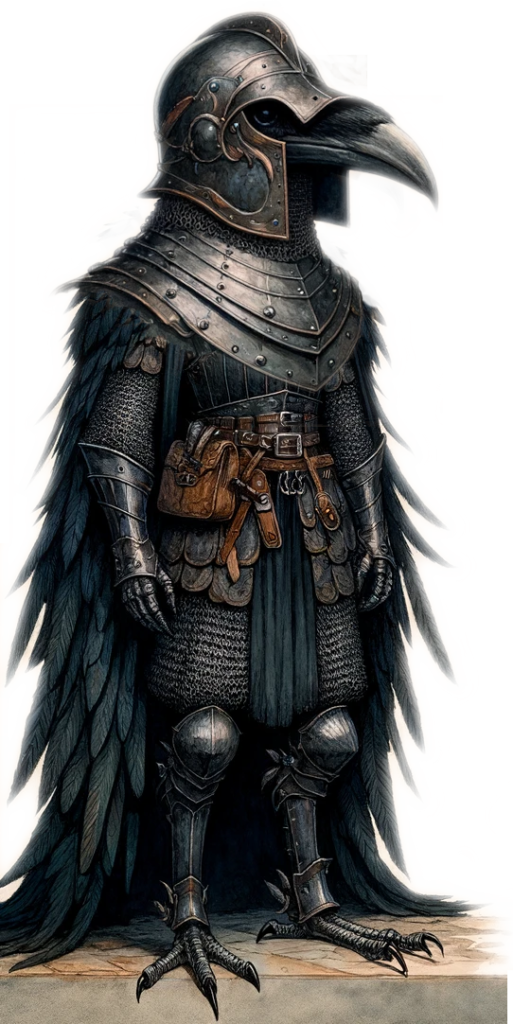
The usher’s influence extends to souls who have succumbed to suicide, become martyrs, or fallen victim to catastrophic events like natural disasters and plagues. The presence of Vonymos is often felt as an overwhelming flood of emotions, powerful enough to break down the sturdiest of emotional barriers. For some, this experience is akin to a churning deluge that slowly wears away at one’s defences. For others, the Mourning Storm’s touch is more immediate and intense, akin to lightning and fire, spurring them into desperate or decisive action.
Vonymos resides in a glass willow overlooking the Storm of Shards. This location, a cascade of broken, floating stones drifting at the edge of the Spire, mirrors the usher’s connection to the fragments of emotion and experience that define the aftermath of loss. The physical manifestation of Vonymos varies. They sometimes appear as a wailing wheel of water around a single eye. This form encapsulates the cyclical nature of grief and the unending echo of cries that accompany loss. Alternatively, Vonymos can appear as a cross between a crow and a knight, symbolising their role as both a harbinger of death and a guardian of the fallen.
Source: Concordance of Rivals [PF1e] p20
Compiled by: Jon Winter-Holt, mimir.net — drawing heavily from Pathfinder 1e Concordance of Rivals.
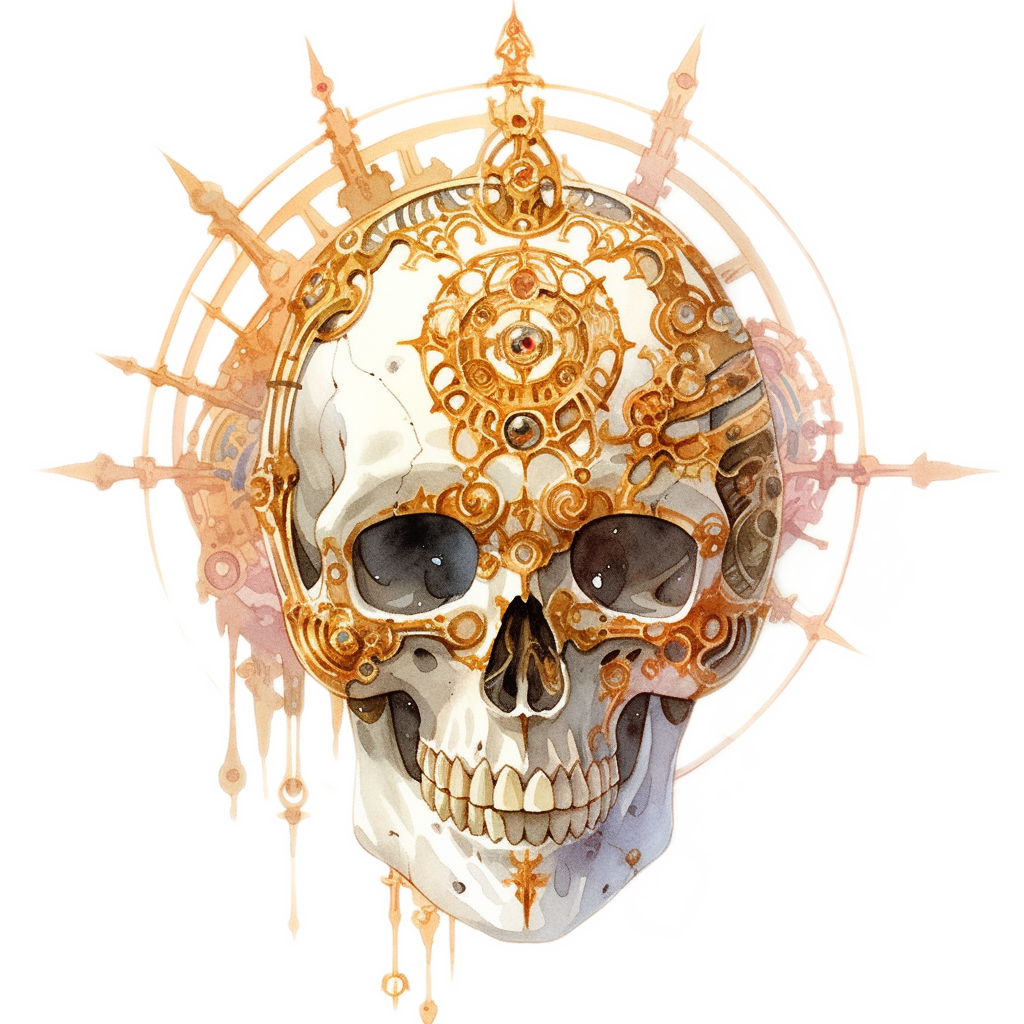

A wonderful job on this rundown on psychopomp ushers. I absolutely love this bit of PF lore and I’m so glad to see it get this kind of treatment.
Thanks! I really appreciate that 🙂 I still need to write up the Underlands section – basically my way of blending the PF Boneyard lore with Planescape. Hopefully it will make sense when I get it out of my head and onto the screen!
These are Amazing, been looking for someone with a clearer vision on these mysterious entities.
Have you considered adding :
Shadix Who Dreams the little known usher of Thrushmoor.” I’d like to see something on him.
Thanks, I’m pleased you like them! I hadn’t heard of Shadix before, there really isn’t much is there! See what you think of what I came up with…